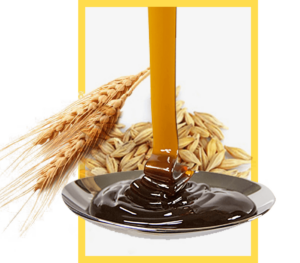Project Report For Malt Extract From Barley
Introduction
Project report for malt extract from barley is as follows.
It would be crucial to develop a market for barley and the value-added goods it produces in order to encourage the development of the crop. Since there is no high-quality malt in the nation, conversion to malt is a wise decision. A portion of the malt can be used to create additional goods with value, like malt extract. The model report’s main goal is to make it easier for businesspeople to comprehend the significance of establishing a malt production unit. This sample report will provide entrepreneurs with direction for beginning such a new project and fundamental technical know-how for establishing such a facility.

Product & Application of Malt Extract From Barley
Malt extract is utilised far more in the manufacturing of food and other items than in brewing. Malt extract has been produced for hundreds of years and was the first natural grain-based sweetener produced using simple technology – long before current corn syrup. Baked goods, particularly those requiring browning or colour development, such as bagels, pretzels, and pizza crusts, are examples of food applications.
Malt extracts have a significant role in the flavour and colour of many breakfast kinds of cereal. Additionally, frozen sweets, non-alcoholic beverages, and confectionery all use malted milk powder and extract. Malted milk balls and candy bars benefit from the flavour and utility of products made from malted barley. Many Caribbean, African, and Middle Eastern countries are particularly fond of carbonated malt-based beverages. It’s a typical additive used to improve the flavour of both human and animal drugs.
It is used to culture or cultivates microorganisms in nutritional broths and agar. Malt extracts are produced in a variety of ways and have varying degrees of quality depending on their intended application. Between extracts meant for use in food and brewing, the primary variations in production and quality can be found. This article will go over each step in the creation of malt extract, emphasising the critical processes and variations.
Raw Material of Malt Extract From Barley
Although the state doesn’t grow a lot of barley, the need for brewers worldwide is growing, therefore production may be increased. Barley can also be found in substantial quantities in Rajasthan and Uttar Pradesh, which are other key sources. On 94000 acres of land, the state grows the 1.09 lakh MT of barley that is produced. Barley is the main fundamental ingredient. It is grown in the Punjab, Haryana, and Rajasthan states.
Malt production uses less than 10% of the 14.5 lakh MT of total national production. According to sources, producers keep 4-5% as seed and use 5-10% for human consumption. The animals receive a substantial amount of the remaining barley. Given how barley is already used, it is evident that there won’t be a problem with processing availability. The problem right now is with quality rather than quantity.
Project Report Sample On Malt Extract From Barley
Get Completely Custom Bankable Project Report
Market Potential Malt Extract From Barley
The market for malt extracts and components was valued at USD 20.71 billion in 2022 and is anticipated to reach approximately USD 30.66 billion by 2030, expanding at a CAGR of 5.03% from 2022 to 2030.
Expenses

Product Cost Breakup

Reveneue Vs Expenses

Market Trend

The following are the final consumers of malt and malt extracts: Breweries: for making beer distilleries, which produce a whisky of the highest caliber. Nourishment products include baked goods, biscuits, candies, cornflakes, imitation coffee, and food for babies made with malted milk. Pet foods, health foods, thin diets, and pharmaceuticals-tonics-medium for bacterial cultivation By 2010, the Indian beer market is anticipated to increase from the current 125 million cases per year to 200 million cases (1500 million liters). Demand for malted barley will increase from 1.25 lakh tons to 2 lakh tons.
By 2010, the market for distilled spirits (mostly whiskey) in India is predicted to increase from the current 55 million cases per year to 80 million cases (720 million liters). Currently, alcohol generated from molasses is used to make whisky. This is about to alter. The market for malt will increase by 40.000 tons if it is assumed that grain-based alcohol will satisfy 20% of the new demand. After 2010, the demand increase is anticipated to continue at a 10% clip. This reflects a yearly increase in demand of 25,000 tonnes. Due to the expansion of the end-user industry, there will be an increase in domestic demand for malt and malt extract.
Breweries are expected to use the majority of malt, and there will certainly be a need for higher-quality malt, given that many foreign businesses now have joint ventures in India. Experts expect that the industry will grow at a rate of 15-20% each year for the next ten years. Due to the present low output, the food and pharmaceutical industries (which include companies that use malt extract in items such as cornflakes, health foods, and so on) are similarly positioned for growth and are expected to grow by 10% each year.
